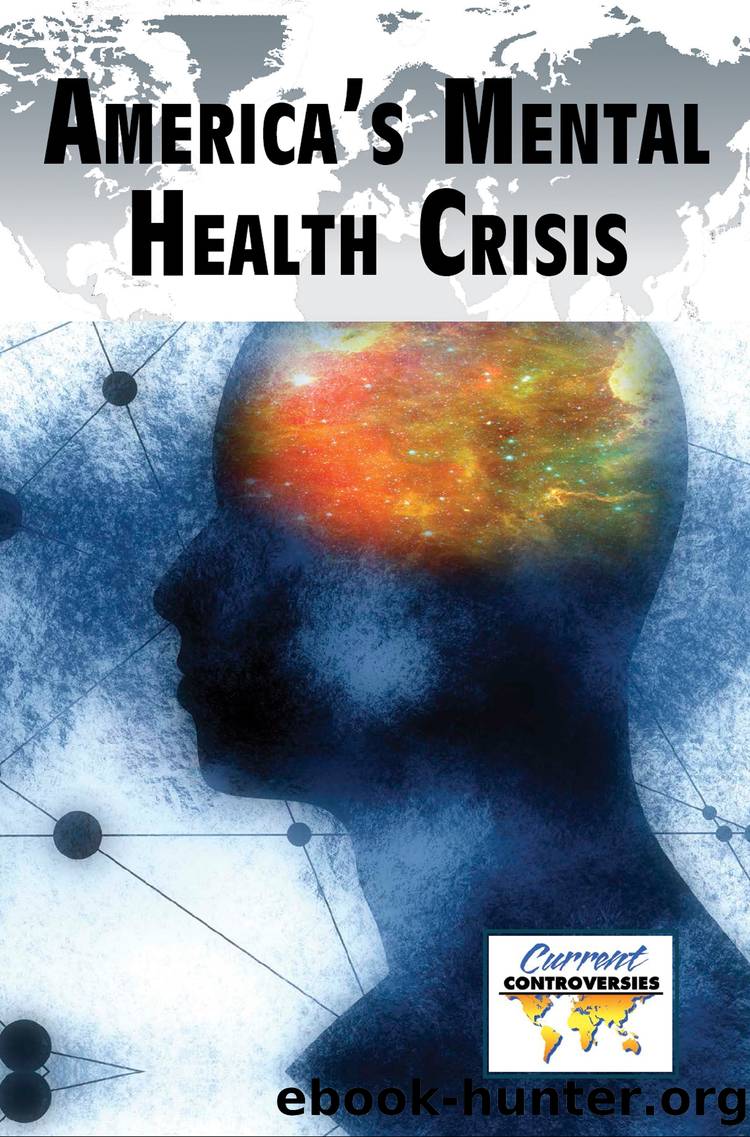America's Mental Health Crisis by Nadra Nittle

Author:Nadra Nittle
Language: eng
Format: epub
Publisher: Greenhaven Publishing LLC
Published: 2019-12-26T00:00:00+00:00
âHow the Stigma of Mental Health Is Spread by Mass Media,â by Naveed Saleh, MD, MS, Dotdash Publishing, December 3, 2018. Reprinted by permission.
Young People with Mental Illness Arenât Ashamed to Admit It
Iran Daily
The Iran Daily is an English-language publication from the Islamic Republic News Agency. It covers global news, politics, sports, and other topics.
As Indiana University of Pennsylvaniaâs Council of Trustees learned during a Student Affairs Committee presentation, more students are seeking mental health care services.
âWe have seen an absolute explosion,â said Dr. Jessica Miller, director of Indiana University of Pennsylvania (IUP)âs Counseling Center.
According to indianagazette.com, the universityâs Health Services reported seeing 122 patients with a mental health diagnosis this fall, compared with 56 in the fall of 2017, 54 in the fall of 2016 and 39 in the fall of 2015.
And Dr. Charles J. Fey, interim vice president for student affairs, said there was an increase for a seventh straight year in the number of students most concerned about a âthreat to self.â
Miller and other IUP officials told the committee that it is part of a nationwide trend.
According to an October report quoted by the health careoriented WebMD, anxiety, depression and panic attacks are sending college students in the United States to mental health clinics in record numbers.
Between 2009 and 2015, the HealthDay News report on the WebMD website said, treatment and diagnoses of anxiety increased by nearly six percent among these students, followed by depression and panic attacks, which each increased about three percent.
Researchers led by Sara Oswalt, chairwoman of the Department of Kinesiology, Health and Nutrition at the University of Texas at San Antonio, found anxiety is the most common problem, affecting almost 15 percent of college students across the nation.
HealthDay News reported that Oswalt and her colleagues used data from the American College Health Association to collect information on more than 450,000 undergraduates.
Itâs not clear if the college environment is causing or even contributing to the increase in these problems, Oswalt told HealthDay News, but if mental health problems arenât addressed, success in school is jeopardized.
IUP officials could offer evidence of that, telling the Student Affairs Committee of an 0.4-point decline in the grade point average among students with anxiety and mild to severe depression.
And it is part of an overall increase in the number of students seeking medical assistance, at a university that can provide care to 100 or more students each day.
Director of Health Services Melissa Dick said 5,619 students utilized Health Services in the past year, compared to 5,568 five years agoâwhen IUP had far more students, 14,369 then to 11,325 this fall.
Miller said various factors are driving the demand for additional mental health services, including a reduced stigma about seeking such care.
âStudents are much more open to seeking services,â Miller said.
In fact, theyâve been so open that thereâs a backlog, with 55 students on a waitlist for appointments at mid-semester.
Thatâs despite things the university is doing, such as moving to a triage model to assess students on the same day and having walk-in hours Monday through Friday between 1 and 3 p.
Download
This site does not store any files on its server. We only index and link to content provided by other sites. Please contact the content providers to delete copyright contents if any and email us, we'll remove relevant links or contents immediately.
Harry Potter: A Journey Through a History of Magic by British Library(375)
The Science of Philip Pullman's His Dark Materials by Mary Gribbin(355)
The Basics of Organic Chemistry by Clowes Martin;(348)
Harry Potter and the Sorcerer's Stone: SparkNotes Literature Guide by SparkNotes(317)
Flowers in the Gutter by K. R. Gaddy(284)
Braiding Sweetgrass for Young Adults by Robin Wall Kimmerer(278)
Super Simple Chemistry by D.K. Publishing(274)
Summary of the Selfish Gene by Readtrepreneur Publishing(269)
Exam Success in Geography for IGCSE & O Level by Unknown(268)
JavaScript Coding for Teens: A Beginner's Guide to Developing Websites and Games by Yueh Andrew(264)
Dark days in Salem: the witchcraft trials by Deborah Kent(250)
The Python Audio Cookbook;Recipes for Audio Scripting with Python by Alexandros Drymonitis(249)
Analysis and Linear Algebra for Finance: Part II by Bookboon.com(244)
Key Immigration Laws by Kathryn Ohnaka(243)
Cracking the AP Economics Macro & Micro Exams, 2017 Edition by Princeton Review(232)
Solutions for a Cleaner, Greener Planet: Environmental Chemistry by Marc Zimmer(227)
The Science of Fashion by Julie Danneberg;(219)
Reverse Engineering For Everyone! by mytechnotalent(215)
Cracking the AP Psychology Exam, 2017 Edition by Princeton Review(208)
